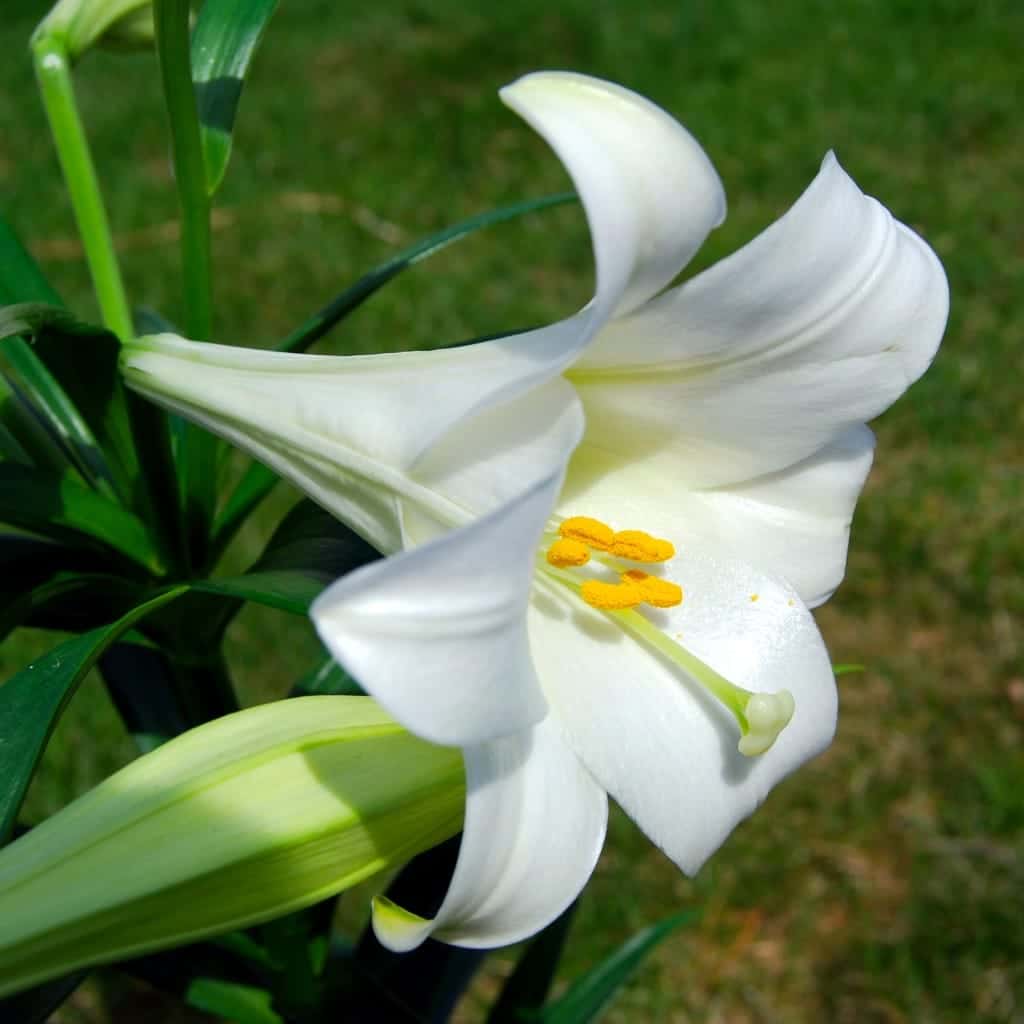Source(s):
- Al Pertuit, Extension Floriculture Specialist, Clemson University.
- Bob Polomski, Extension Consumer Horticulturist.
Making a plant flower at a predetermined time or under artificially imposed conditions is called forcing. Hardy bulbs are particularly suited for forcing indoors and offer a succession of color throughout the winter and spring months.
The most common hardy bulbs for forcing are crocuses (Crocus species), daffodils (Narcissus species), hyacinths (Hyacinthus species) and tulips (Tulipa species). Others that can easily be forced include Dutch iris (I. x hollandica) and netted iris (Iris reticulata), snowdrop (Galanthus species), grape hyacinth (Muscari species), winter aconite (Eranthis species), star-of-Bethlehem (Ornithogalum species), and Brodiaea species.
Allium, Camassia, Lilium and Scilla species are considered difficult-to-force bulbs; they require special techniques and usually greenhouse conditions (e.g., high light intensities).
Forcing hardy bulbs involves four stages:
- selecting appropriate bulbs;
- planting;
- cooling; and
- forcing into flower.
For the best results, purchase only those cultivars that are recommended for forcing, especially if a wide number of cultivars are available, as is the case with tulips, hyacinths and daffodils. Handle the bulbs with care at all times. They are living plants and should not be dropped or subjected to extremely low or high temperatures. If you cannot plant your bulbs immediately, store them in a cool place (35 to 55 °F). Bare bulbs can be stored for several weeks in the refrigerator prior to potting. Store them in a mesh bag or a paper bag with holes to permit ventilation. Vegetable or crisper drawers can be used, but avoid storing bulbs in the same drawer as ripening fruit or vegetables which give off ethylene gas which may harm the bulbs. Also, some bulbs are poisonous, so this storage method is not recommended for households with young children.
Planting
Bulbs should be potted up anytime from mid-September to December, depending on the desired date of flowering and the length of storage. In general, plant in mid-September for flowering in late December, around mid-October for flowers in February and in mid-November for March and April flowers.
The potting medium must be well-drained, retain adequate moisture and be able to anchor the bulbs. Commercial potting soil is adequate, but a better choice is a mix composed of equal volumes of potting soil, sphagnum peat moss and perlite. Since the bulbs already contain enough food for the developing flowers and roots, they do not have to be fertilized. Use clean pots that have drainage holes in the bottom. If you use clay pots, soak them overnight so they won’t draw moisture from the planting medium.
Fill each pot loosely with soil. Ideally, bulbs should be planted at the same depth as bulbs grown outdoors; however, this is often not possible with larger bulbs which need a pot that is deep enough to allow at least 1 to 2 inches of soil beneath the bulb. Tulips and daffodils may be left with the tips of the bulbs showing; smaller bulbs such as crocus, snowdrop and grape hyacinth should be covered completely. Do not press the bulbs into the soil; the soil should be loose so roots can grow through it easily. A 6-inch pot will accommodate six tulips, three hyacinths, six daffodils, or 15 crocuses. When planting tulips, face the flat side of the bulb toward the outside of the pot. Since the first (lowest) leaf produced by the flowering shoot is always produced towards the flat side of the bulb, the lowest leaves will arch over the rim and create an attractive, uniform appearance. After setting the bulbs, fill the pot with soil to within ¼- to ½-inch of the rim. Add water until it drips through the drainage hole in the bottom of the pot. Label each pot, noting the name of the cultivar, the planting date and the date to be brought indoors for forcing.
Cooling the Bulbs
All hardy bulbs must be exposed to cool temperatures between 35 and 50 °F to prepare them for subsequent leaf and flower growth. During this cool period, the plant’s roots are forming and the stem is elongating. The optimum cooling period is from 12 to 16 weeks. Although they can be cooled anywhere from 12 to 18 weeks, the stem length will suffer, becoming shorter (flowers may also abort) if the bulbs have been cooled for fewer than 14 weeks and longer if the bulbs have been cooled for more than 15 weeks. If the bulbs were held in the refrigerator for more than three weeks, subtract three weeks from the required cooling time.
Any structure that maintains temperatures between 35 and 50 °F is fine (e.g., an unheated basement, crawl space, or an old refrigerator). For areas that experience sufficiently cold temperatures during the winter months, pots can be stored outdoors in a cold frame. Locate the cold frame in a well-drained, shady location or on the north side of a building where the soil is as uniformly cool as possible. Place the pots in the coldframe and cover them with loose insulating material such as sawdust, straw, leaves, peat moss or shredded styrofoam. Close the frame early in December and open it on mild days to prevent too much heat from building up inside the frame, stimulating top growth before the roots have formed. Check the pots periodically to see that the medium is moist.
Forcing Blooms
At the forcing stage, the pots are taken out of storage at the completion of their cool period and into warmth and light, which triggers the formation of leaves and flowers. Place the pots in a cool location (60 to 65 °F) receiving indirect sunlight. When the shoots turn green, expose the pots to warmer temperatures and more light to stimulate growth and flowering. Rotate the pots regularly so that all the leaves receive an equal amount of light. Flower buds can be expected within three to four weeks. When the buds begin to show their color, move the pots into indirect sunlight to prolong the flowers. Be sure to keep the soil evenly moist throughout the forcing period. Flowers will last longer if the pots are moved into a cool room at night.
Hardy bulbs that have been forced into flower should be planted in the garden once spring arrives, or allowed to mature and go dormant in their pots and then planted in the fall. Daffodils can be transplanted into the garden in the spring. They will not flower the following year, but may the year after. Other bulbs such as tulips and hyacinths are best discarded after forcing.
Forcing Without Cooling
The paper white narcissus (N. tazetta ‘Paper White’), its yellow cultivar Soleil d’Or, and the Chinese sacred lily (N. tazetta var. orientalis) can all be forced without cooling. Successive plantings made about two weeks apart after mid-October can produce indoor flowers from Thanksgiving until late March.
Start by filling an undrained decorative bowl or dish that is at least 2 to 3 inches deep with enough pebbles, pea gravel, coarse sand or pearl chips to reach about 1 inch below the top. Add water until it is barely below the surface of the gravel. Set the bulbs on top and hold in place with enough gravel to cover the bottom quarter of each bulb. Carefully maintain that water level.
Tender Narcissus are best kept in a cool 50 to 60 °F location in low light until they are well-rooted and the shoots appear, usually in about two to three weeks. Then bring them gradually into direct sunlight and warmer temperatures. These bulbs cannot be forced again after blooming; discard them.
Amaryllis (Hippeastrum cultivars) can be forced inside in four to six weeks without cooling, and then planted outside in the spring or allowed to remain in pot culture. To program potted amaryllis for forcing, withhold water in mid-August, then start watering again about six weeks before you want them to flower.
Center Publication Number: 160




